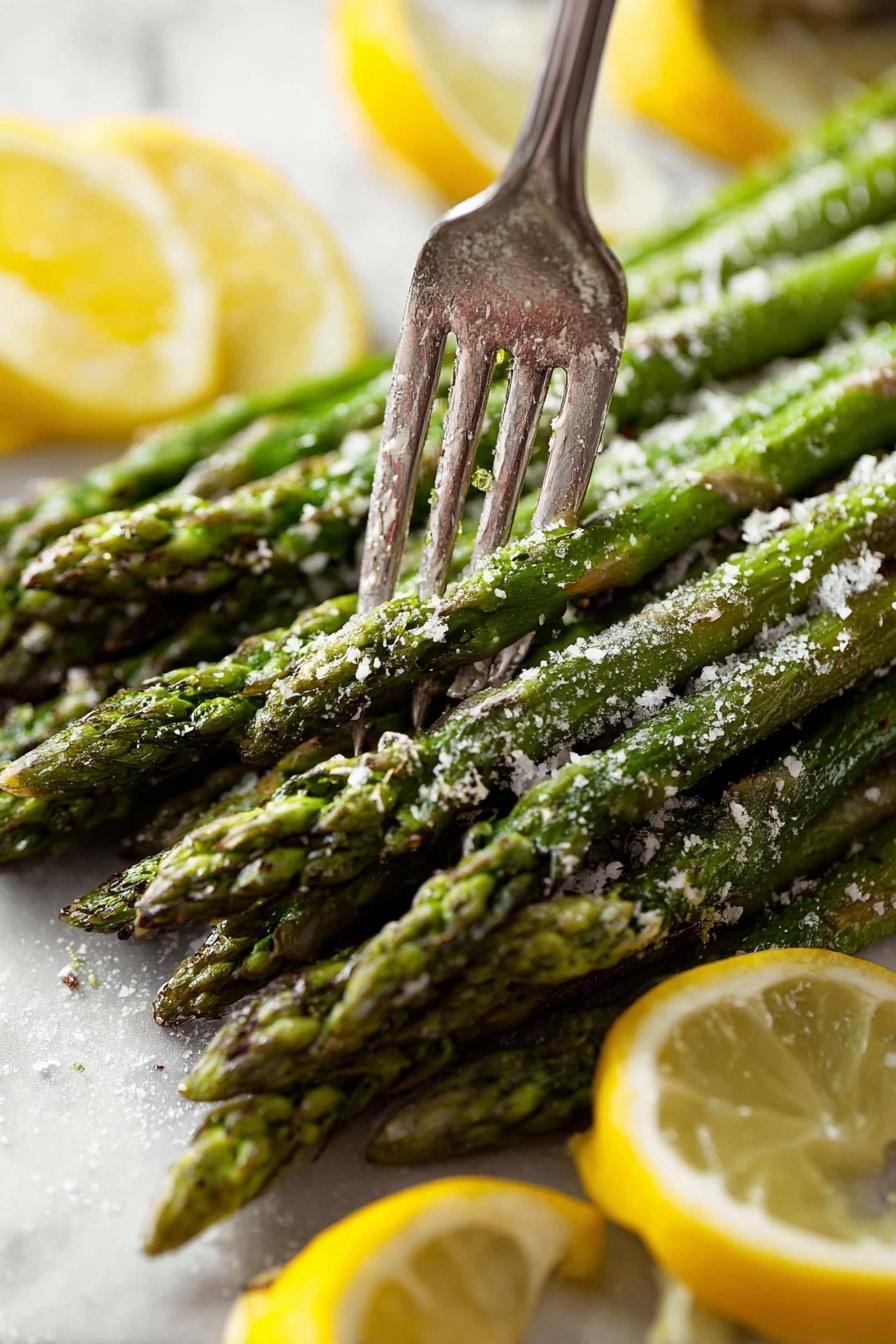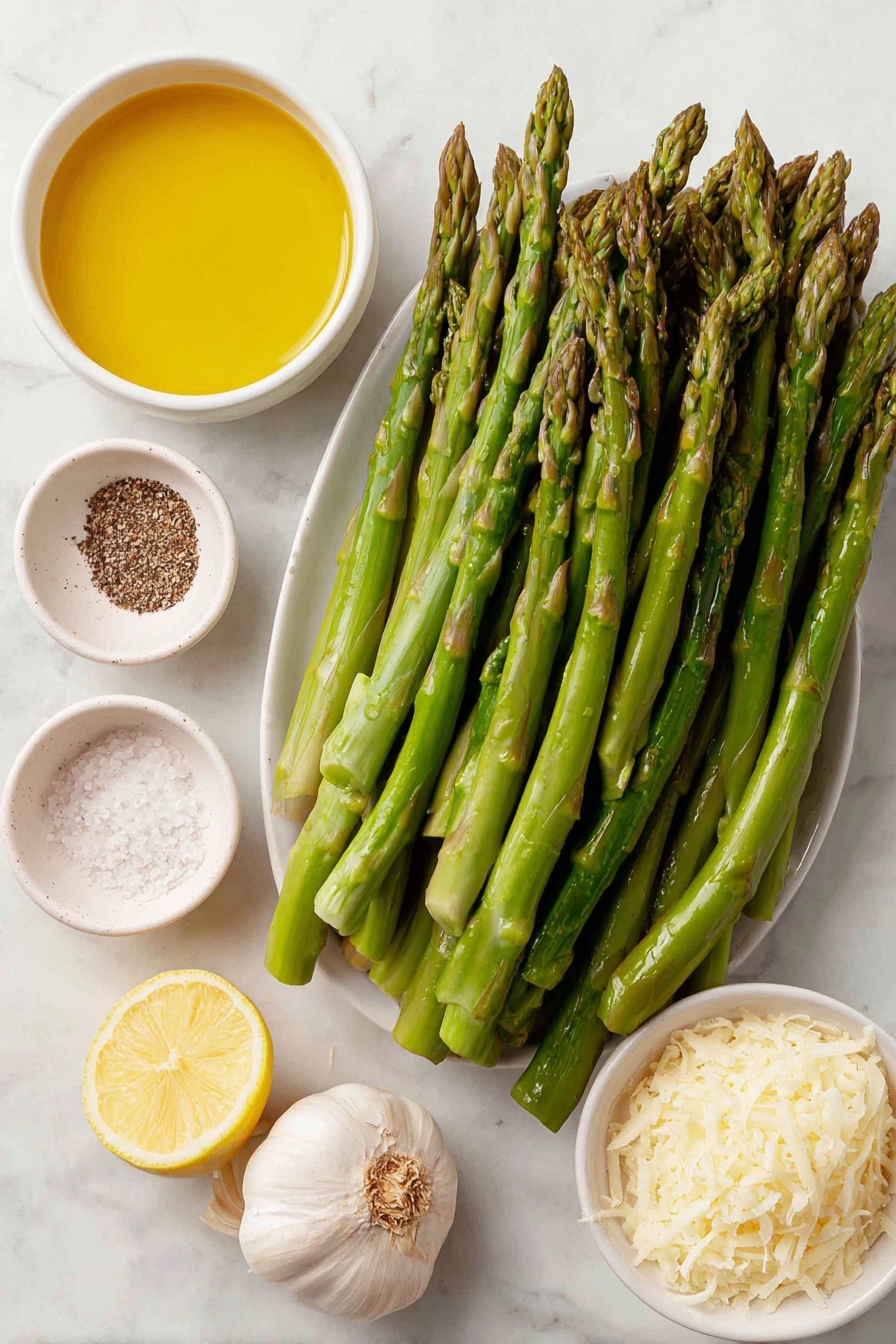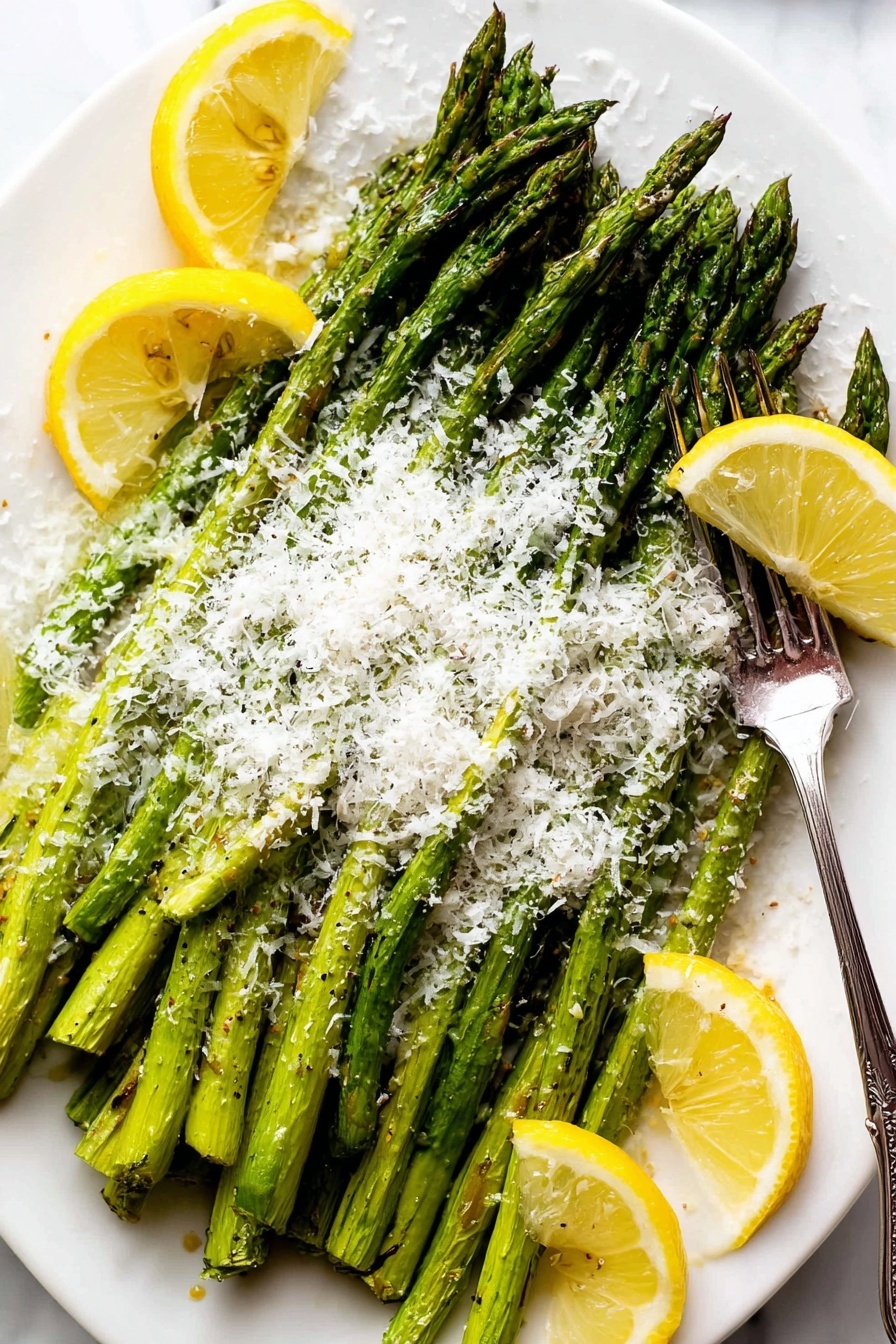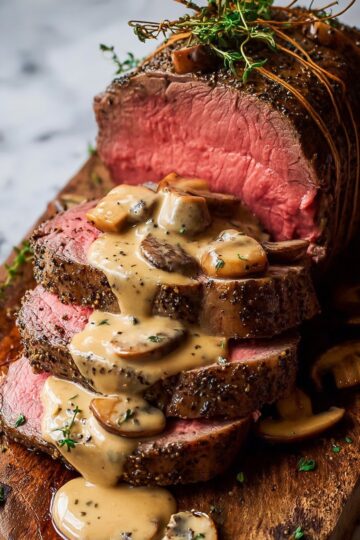There’s something about the way bright lemon and nutty Parmesan complement tender roasted asparagus that just makes a simple vegetable sing. The Roasted Asparagus with Lemon and Parmesan Recipe is one of those effortless dishes that fills your kitchen with mouthwatering aromas and always gets everyone asking for seconds.
Jump to:
- Why You'll Love This Recipe
- Ingredients & Why They Work
- Make It Your Way
- Step-by-Step: How I Make Roasted Asparagus with Lemon and Parmesan Recipe
- Top Tip
- How to Serve Roasted Asparagus with Lemon and Parmesan Recipe
- Make Ahead and Storage
- Frequently Asked Questions:
- Final Thoughts
- Roasted Asparagus with Lemon and Parmesan Recipe
Why You'll Love This Recipe
I keep coming back to this Roasted Asparagus with Lemon and Parmesan Recipe because it’s such an easy way to turn fresh asparagus into a flavorful side that feels both fancy and fuss-free. Every time I roast asparagus like this, the combination of garlic, lemon, and Parmesan hits just right.
- Speedy and Simple: You can have this on the table in under 15 minutes—perfect for busy weeknights or when guests pop by unexpectedly.
- Bright and Savory Flavor: Lemon juice brightens the earthy asparagus while Parmesan adds a lovely salty richness.
- Minimal Ingredients: Just olive oil, garlic, salt, pepper, lemon, and Parmesan come together to elevate the natural taste.
- Great for All Skill Levels: Whether you’re a beginner or a kitchen pro, you’ll appreciate how straightforward this recipe is with consistently delicious results.

Ingredients & Why They Work
Each ingredient plays a key role in bringing balance and flavor to this dish. Fresh asparagus is the star, while olive oil and garlic add depth and aroma. Lemon juice cuts through with brightness, and Parmesan adds that irresistible savory note. I always recommend picking the freshest, firmest asparagus for the best texture and taste.

- Asparagus: Look for firm, bright green stalks with closed tips—avoid limp or woody stems for the best roast.
- Extra virgin olive oil: Adds richness and helps the asparagus roast evenly while preventing sticking.
- Salt: Enhances the natural flavors and balances the bright lemon and sharp Parmesan.
- Black pepper: Adds a subtle heat and depth.
- Garlic: Finely minced to gently infuse the asparagus—avoid large chunks that might burn.
- Lemon juice (optional): Provides a fresh, tangy lift that wakes up the roasted flavors beautifully.
- Parmesan cheese (optional): Freshly grated for that perfect salty, nutty finish that melts slightly on warm asparagus.
Make It Your Way
I love to play around with this recipe depending on the season or what’s in my pantry. Roasted asparagus is so versatile—feel free to tweak it to suit your mood or mealtime.
- Variation: Sometimes I swap out lemon juice for a splash of balsamic vinegar to add a touch of sweetness and tang—it’s surprisingly good!
- Dietary Modification: This recipe is naturally gluten-free and vegetarian. Swap Parmesan for a vegan cheese to keep it plant-based.
- Seasonal Twist: Adding crushed red pepper flakes gives it a warming kick perfect for cooler months.
Step-by-Step: How I Make Roasted Asparagus with Lemon and Parmesan Recipe
Step 1: Prep the asparagus perfectly
First things first, snap off the woody ends of your asparagus. The stalk naturally breaks where the stem starts getting tough, so just bend and snap. This keeps the tender parts intact while discarding the fibrous bits. I always like to spread the trimmed asparagus evenly on a baking tray so they roast evenly.
Step 2: Season and toss gently
Drizzle the asparagus with extra virgin olive oil, sprinkle salt, pepper, and the finely minced garlic over the top. Then, toss everything gently—either with your hands or tongs—to coat every stalk lightly but thoroughly. This step is key for creating that perfect roasted texture and flavor.
Step 3: Roast to tender perfection
Pop the tray into a 220°C/430°F oven (or 200°C fan) and roast for 7 minutes for standard-sized asparagus. Thicker stalks may need 10-12 minutes. Keep an eye on them—they should get a beautiful slight char at the tips and be tender but still snap when bitten. Avoid roasting too long or they’ll turn soggy and lose their fresh flavor.
Step 4: Finish with lemon and Parmesan
Once out of the oven, toss the asparagus with fresh lemon juice for a bright tang. Then lay the spears on a serving platter and grate freshly shaved Parmesan over the top. The warmth helps the cheese melt just slightly, creating an irresistible finish.
Top Tip
Over the years, I’ve learned that roasting asparagus evenly and timing it just right makes all the difference between a meh side and a star-worthy dish. These little tips will boost your confidence in the kitchen and guarantee success.
- Choose Even-Sized Stalks: Roasting works best when asparagus pieces are similar in thickness to cook uniformly.
- Toss Gently but Thoroughly: Make sure every stalk has a thin coating of oil to avoid drying out during roasting.
- Watch the Clock: Set a timer and check a minute or two before the recommended time to avoid overcooking.
- Grate Cheese Fresh: Pre-grated Parmesan often has anti-caking agents that affect meltability and taste—fresh is best!
How to Serve Roasted Asparagus with Lemon and Parmesan Recipe

Garnishes
I love to top mine with an extra squeeze of lemon just before serving for a zesty punch. Sometimes, I’ll sprinkle a few toasted pine nuts or a pinch of chili flakes to add texture and a little warmth. Fresh herbs like chopped parsley or basil work beautifully too, especially in spring and summer.
Side Dishes
This roasted asparagus recipe pairs wonderfully with roasted chicken, grilled salmon, or alongside a frittata for a light lunch. I especially enjoy it with creamy mashed potatoes or a vibrant quinoa salad to complete the plate.
Creative Ways to Present
For special occasions, I arrange the asparagus spears in tight bundles tied with thin chives or a strip of blanched leek. Drizzling a balsamic glaze artfully over the top adds a touch of elegance, perfect for entertaining without much extra effort.
Make Ahead and Storage
Storing Leftovers
Roasted asparagus keeps well in the fridge for up to 3 days. Store leftovers in an airtight container and add a sprinkle of fresh lemon juice before reheating to refresh the flavors.
Freezing
I don’t recommend freezing roasted asparagus as the texture tends to become mushy once thawed. It’s best fresh, but if you must freeze, flash-freeze the raw trimmed asparagus first and roast fresh when ready.
Reheating
To reheat, I quickly warm leftover asparagus in a hot skillet for a few minutes—it crisps them up nicely without sogginess. Microwaving works too but can make them limp, so stovetop is my go-to.
Frequently Asked Questions:
When your asparagus tips get a slight golden brown color and the stalks are tender but still have a little snap when bitten, they’re perfectly roasted. Overcooked asparagus tends to be limp and wrinkly.
Absolutely! The Parmesan adds a lovely savory finish but the lemon and garlic-seasoned roasted asparagus is delicious on its own if you want a dairy-free or vegan option.
Make sure to roast at a high temperature and avoid overcooking. Toss asparagus with just enough oil to coat but not drench them. Spread them in a single layer on the baking tray for even roasting.
Yes! You can trim and season asparagus a few hours before roasting and keep it covered in the fridge—just roast it fresh when you’re ready to serve to retain the best flavor and texture.
Final Thoughts
This Roasted Asparagus with Lemon and Parmesan Recipe holds a special place in my kitchen—it’s that reliable, bright green side that brings freshness and flavor to so many meals. I hope once you try it, you’ll keep coming back to it too. It’s like a little celebration of seasonal veggies that’s both simple and satisfying—just the way I like to cook and share with friends.
Print
Roasted Asparagus with Lemon and Parmesan Recipe
- Prep Time: 5 minutes
- Cook Time: 12 minutes
- Total Time: 17 minutes
- Yield: 4 servings
- Category: Side Dish
- Method: Baking
- Cuisine: Australian
- Diet: Vegetarian
Description
A simple and flavorful recipe for roasted asparagus, perfect as a healthy side dish. Tossed with olive oil, garlic, and optional lemon juice and parmesan, this dish brings out the natural sweetness and crisp texture of asparagus with a quick roasting method.
Ingredients
Main Ingredients
- 500 g asparagus (about 1 lb or 3 standard Australian bunches)
- 1 ½ tablespoon extra virgin olive oil
- ¼ teaspoon salt
- ¼ teaspoon pepper
- 1 garlic clove, finely minced
Optional Finishes
- 2 tablespoon lemon juice
- 2 tablespoon freshly grated parmesan cheese
Instructions
- Preheat the oven: Preheat your oven to 220°C (430°F) or 200°C fan-assisted to get it ready for roasting the asparagus.
- Prepare the asparagus: Snap off the woody ends of the asparagus stalks; they will naturally break at the right point, ensuring only the tender parts are cooked.
- Season the asparagus: Place the asparagus on a baking tray. Drizzle with extra virgin olive oil, then sprinkle with salt, pepper, and the finely minced garlic. Toss everything together until the asparagus is evenly coated and spread them out in a single layer on the tray.
- Roast the asparagus: Roast for 7 minutes for average-thickness stalks until the ends have some color and the asparagus is just cooked through. For very thick asparagus, roast for 10 to 12 minutes. Be careful not to overcook to avoid wrinkling.
- Finish and serve: Remove the asparagus from the oven. If desired, toss with lemon juice for brightness. Transfer to a serving platter and grate over the optional parmesan cheese before serving.
Notes
- Choose fresh asparagus with firm stalks and tight tips for the best texture.
- Adjust roasting time based on the thickness of the asparagus stalks to avoid overcooking.
- For a vegan option, skip the parmesan or use a vegan cheese substitute.
- Lemon juice adds a nice acidity that complements the roasted flavor but is optional based on preference.
- Serve immediately for the best texture and flavor.
Nutrition
- Serving Size: 1 serving
- Calories: 80 kcal
- Sugar: 2 g
- Sodium: 150 mg
- Fat: 7 g
- Saturated Fat: 1 g
- Unsaturated Fat: 6 g
- Trans Fat: 0 g
- Carbohydrates: 5 g
- Fiber: 3 g
- Protein: 3 g
- Cholesterol: 5 mg







Leave a Reply